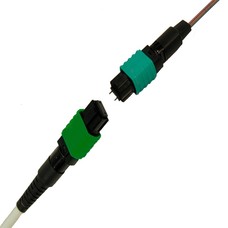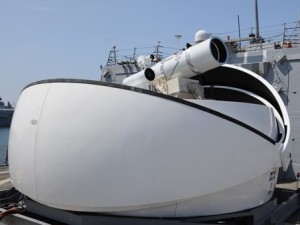|
Sumitomo’s Lynx2-MPO is the industry’s first MPO fusion splice-on field installable connector for customized, on-site, terminations. The breakthrough technology of the Lynx2-MPO meets the needs of the network for greater optical fiber density and addresses the connectivity demands for faster and easier terminations, upgrades, repairs and restorations, and significant cost savings required for today’s data center, enterprise network, outside plant, OEM, central office, and virtually any FTTx network application. MTP® compatible, the Lynx2-MPO is the perfect solution for optical fiber ribbon and loose tube round cord and patch cord terminations. Like all Lynx2 fusion splice-on connectors (SC, LC, FC, and ST), the Lynx2-MPO allows the technician to make permanent terminations with the exact cable length for fast and easy installations and upgrades at the work site. The on-site customization facilitated by the Lynx2 connectivity method eliminates the risk of shorts and slack, repair lag, and logistic delays associated with preterminated cables and pigtails — making the Lynx2-MPO your best choice in customized fiber termination.
0 Comments
Researchers in the US, funded by the US Air Force, Defense Threat Reduction Agency (DTRA), and the National Science Foundation, have managed to turn air into an “optical fiber.” This breakthrough allows the scientists to create an air waveguide, allowing for much better transmission of lasers through free space — much in the same way that glass and plastic waveguides allow for efficient transmission of laser light over long stretches of optical fiber. As you might have guessed from the US military’s involvement, this could be big news for laser weapons — but there are repercussions for laser-based communications and scientific research as well. As we covered in our featured story, The Science of Beam Weapons, lasers really suck at traveling through air. Lasers are fine over short distances at low intensities (e.g. laser pointers), but to increase their effective range or destructive power you really have to dial up the power — and, rather annoyingly, strong lasers have so much energy that they ionize the air that they travel through, creating nasty air (blooming) that quickly causes the laser to lose coherence and fizzle. As a result, any powerful laser that might be used for long-range communications — or bisecting a battalion of enemy soldiers on the battlefield — self-destructs after just a few meters of traveling through air. This is why, for the most part, lasers are almost exclusively used in conjunction with a waveguide — such as optical fiber — that keeps the beam coherent over a long distance. Now, however, Howard Milchberg and some graduate students at the University of Maryland have created an air waveguide, allowing them to beam powerful lasers much farther through open space before they fizzle. The science is fairly complex, but essentially the waveguide is produced by a series of femtosecond laser pulses. The rapid heating caused by the laser pulses generates a ring of tiny sound waves that converge on a center point, creating a high-pressure channel in the middle surrounded by a low-pressure region. The main laser beam is then transmitted along these high-pressure channels, with the light bouncing off the lower refractive index of the low-pressure region — much in the same way that light bounces along the inside of a glass fiber.
Over a short distance in the lab, Milchberg said the waveguide boosted signal quality by 50%, which might not sound like much, but for longer distances — which is what this is all about — that should equate to a signal-to-noise ratio improvement of around 104 which is huge. As far as real-world applications go, there are dozens of scenarios that stand to make serious gains from the use of air waveguides. Milchberg and co specifically mention laser-induced breakdown spectroscopy (the technology Curiosity uses to analyze rock samples on Mars), but long-range LIDAR and the US military’s laser weapons are two other obvious applications. Outside of weaponization and scientific endeavor, air waveguides could also significantly improve the range and throughput of free-space laser networks — which are already by far the fastest and lowest latency wireless networks available. source - www.extremetech.com |
AuthorI have been in the field of fiber optics since early 1990s. I gained fiber optics skills and knowledge via my working experience as end-user, main contractor and sub-contractor and finally as an optical fiber enterpreneur. Archives
January 2017
Categories
All
|


 RSS Feed
RSS Feed